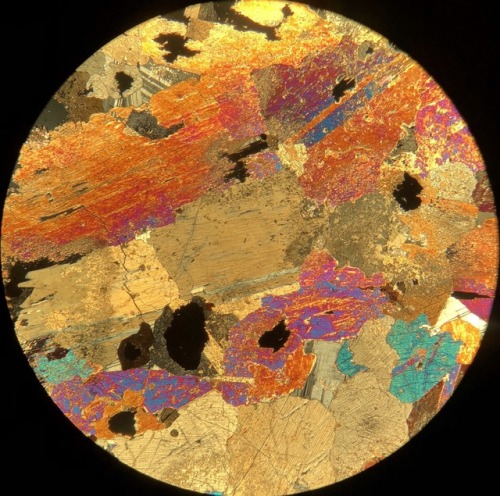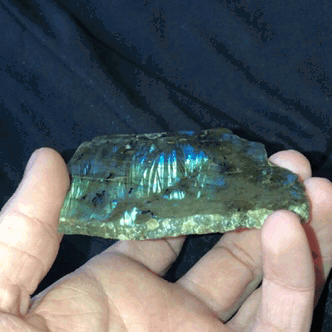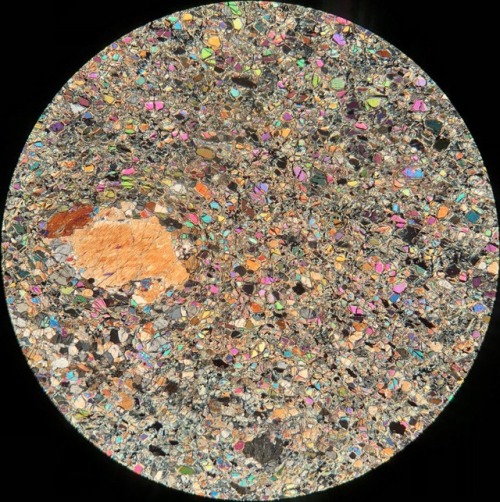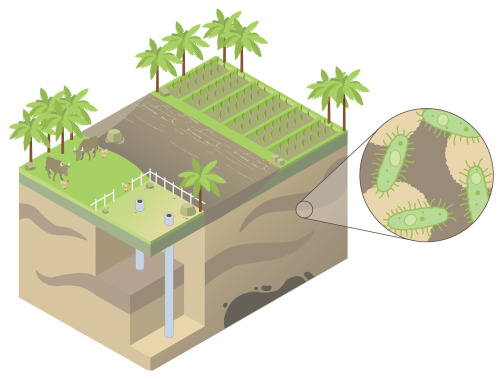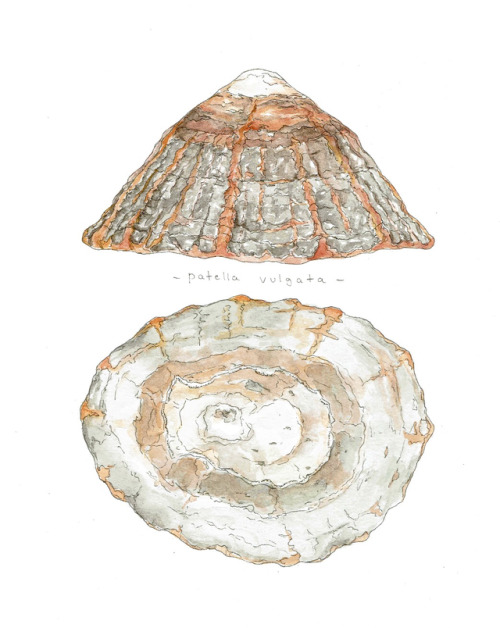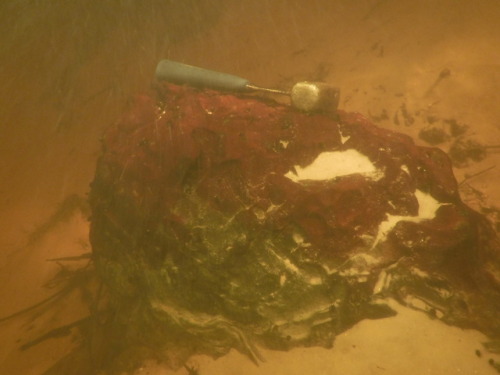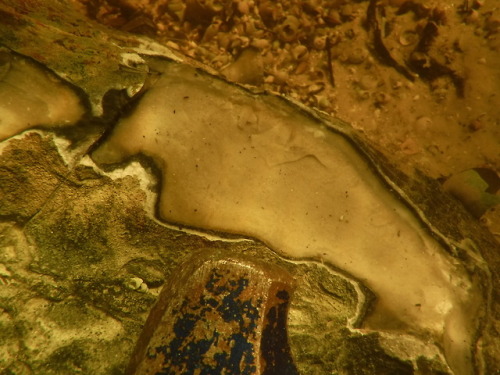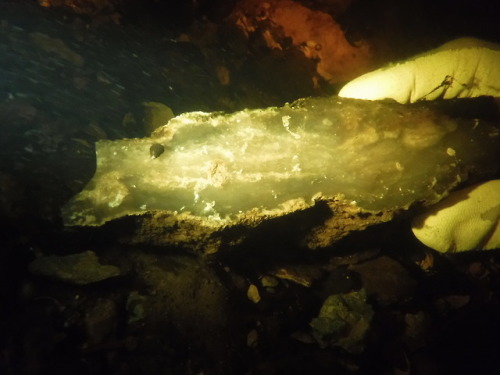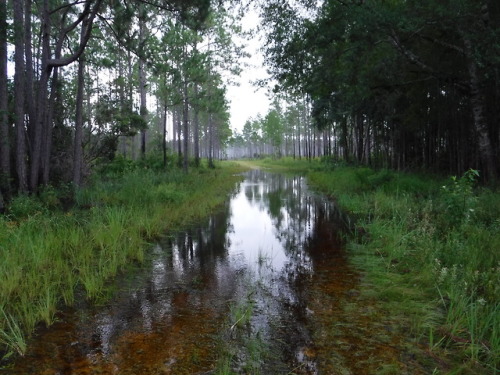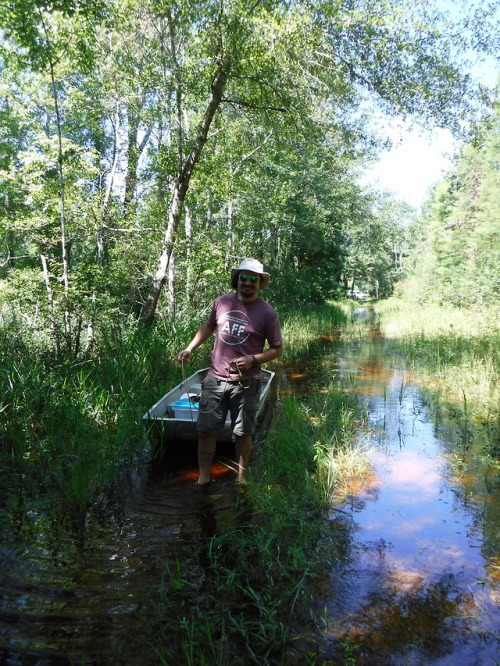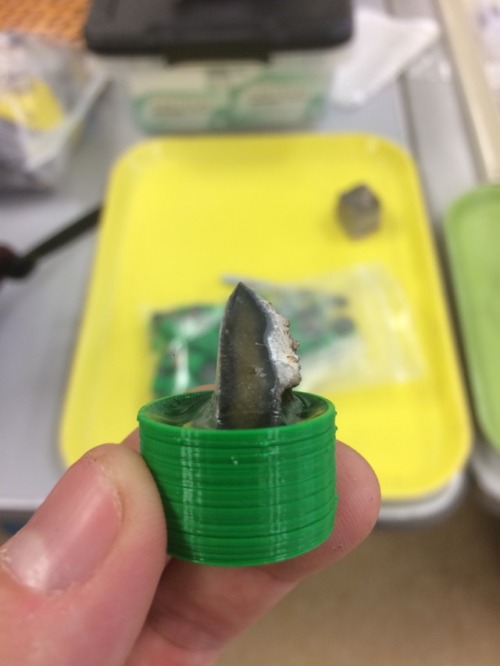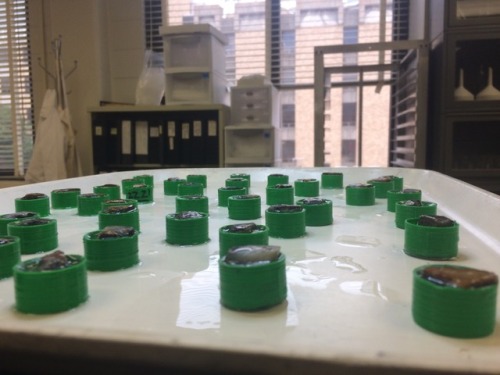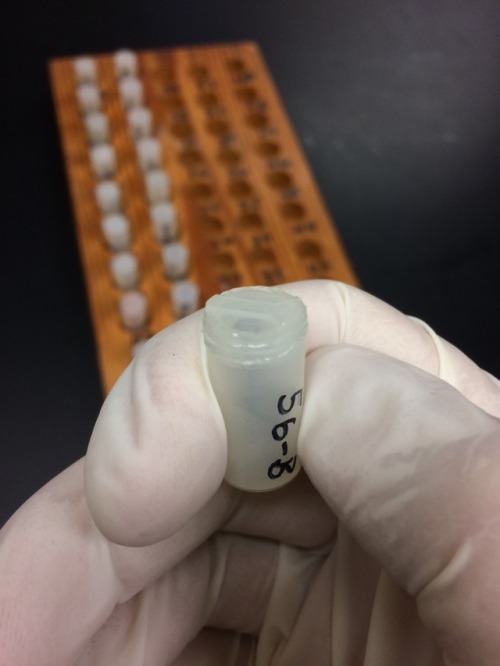#geochemistry





All of these samples were collected at Hogen Camp Mine, Harriman State Park, NY. The first image is a reflected light image of the ore vein. The ore vein formed as a result of dextral shear which ultimately created large fractures. Shortly after this, hydrothemal alteraltion occured of the metavolcanic gneiss in the region (image 2 and 3). The metavolcanic gneiss is rich in iron. Due to this, the highly acidic metamorphic fluids began to precipitate in the fractures. The process yeilded magnetite, clinopyroxene, and less common biotite within the fractures occuring at Hogen Camp Mine. The clinopyroxene and biotite are highly rich in iron.
Image 3 and 4 is the local pink pegmatites that occured in the region around 923 Ma. The pegmatitic dikes formed post-Ottawan orogeny. Composition includes: alkali feldspar with minor constituents of clinopyroxene and quartz.

This rock is a quartzofeldspathic gneiss from Surebridge Mine in Harriman State Park, NY. What’s so cool about this is you can see the hydrothermal process which alters biotite to chlorite. The large brown grain being biotite, and the purple/blue/green in the center being chlorite. (10x XPL)
Working on polishing my samples for reflective light microscopy. This sample is a pyroxenite from Hogen Camp Mine in the Hudson Highlands region of New York. The area was once a lead producer of iron ore and magnetite for the east coast.
Post link
This rock is predominantly composed of quartz, alkali feldspar, and plagioclase. The alkali feldspar grains are large and take up a decent amount of the slide. The perthite is mainly one grain that is large and is about 11mm. The plagioclase has
polysynthetic twinning.The muscovite is pleochroic under PPL and has clinopyroxene embayed in the core. Clinopyroxene is present because the melt reacted with the clinopyroxene and create muscovite. Leucite is also present in a minimal quantity. The leucite is embayed in the alkali feldspar. This happened when the alkali feldspar started to crystalize. The silica content was too great and the leucite reacted with the melt to form alkali feldspar. Due to the composition the rock would just be classified as a granite.
(leucite in 2nd pic)
Post link
Composition includes: biotite, muscovite, chlorite, feldspars, oxides, and quartz. Feldspar poikiloblasts with inclusions of quartz and oxides are prominent throughout much of the sample. Most poikiloblasts occurred synkinematic to the 1st deformation event (D1) and rotation occurred. D1 had a direct effect on the foliation (S1) of minerals that already crystallized. D2 led to crystallization of quartz which is seen in quartz ribbons and pressure fringes throughout the sample.
Post link
This thin section shows an amygdule in a sample of amygdaloid basalt. The rock formed due to an eruption of gaseous, low viscous magma which resulted in vesicles throughout much of the rock. The rock then underwent hydrothermal alteration and low temperature alteration minerals formed in the once vesicles, forming amygdules. The amygdules are composed of quartz, celadonite (a type of mica) and epidote.
Post link
Websterite in thin section
Clinopyroxene and orthopyroxene with few anhedral plagioclase crystals in interstitial space. Opaques (oxides) also present.
Post link

This is the third part of a seriesaboutisotopesand why they’re useful and interesting to scientists.
Isotopes are the flavors of elements. And because our universe is made up of atoms of elements, every object can be thought of as a delicious smoothie of flavors. Scientists like me are trying to reverse engineer those mixtures and pick out individual tastes, in order to answer questions about…

This is the second part in a series how isotopes work and how they are scientifically fascinating. Part I here.
It turns out a horse is not just a horse, of course. The horse is a collection of atoms, and each of those atoms has a particular isotopic “flavor”, and the collection of isotope types in the horse tells a story. At the end of the day, scientists are simply interested in reading and…
Stimulation of Microbially Mediated Arsenic Release in Bangladesh Aquifers by Young Carbon Indicated by Radiocarbon Analysis of Sedimentary Bacterial Lipids
Graphical abstract in a recent science publication by Environmental Science & Technology, ACS Publications.
The paper is available here for purchase.
Post link
Cerastoderma Edule
Patella Vulgata
Mytilus Edulis
Watercolour on paper
Illustrations for the bachelor thesis presentation of my best friend, who analysed rare earth elements in a series of shells including some of these :)
Post link
Sampling underwater chert quarries in northwest Florida. A few weeks of working in the Wacissa, Aucilla, and St. Marks Rivers is paying off with some awesome new information about submerged prehistoric quarries!
Post link
When your project area floods, you have to adapt. The sites are high and dry, but the access roads are swamped due to biblical rains and consequently high rivers. The floodwaters are quickly receding though, and we carry on! This was not quite what I had in mind for underwater archaeological fieldwork…
Post link
Recently, I’ve been working on analyzing surficial weathering of chert using Laser Ablation-Inductively Coupled Plasma-Mass Spectrometry (LA-ICP-MS). In order to isolate the weathered surfaces for top-down analysis, chert fragments were mounted in epoxy, cut, ground, and polished. Because the ablation cell is small and geologic samples and lithic artifacts are often prohibitively large, I designed custom sample cups and had them 3D printed. These cups were the right size for the ablation chamber and helped to align the chert samples perfectly. A few failed (leaked), but they still served their purpose in mounting the chert samples.
Tomorrow I will analyze the samples! More updates soon!
Post link
Neutron Activation Analysis sample preparation, including preparing analytical controls and sealing vials!
Post link








